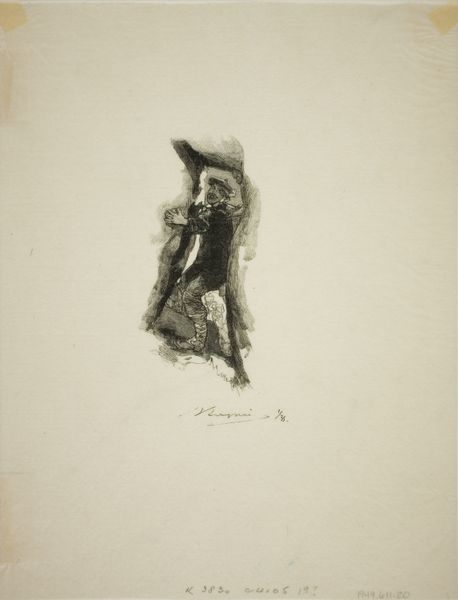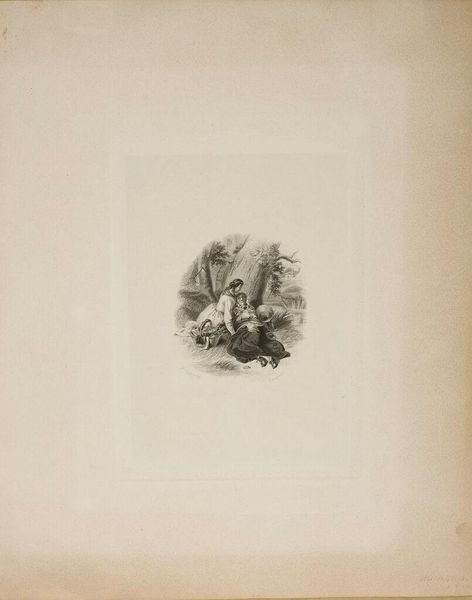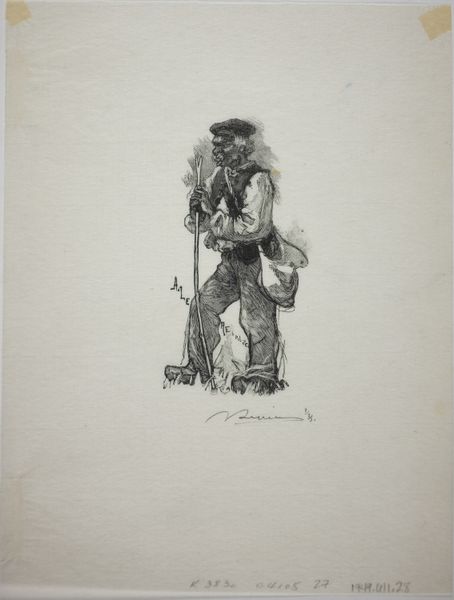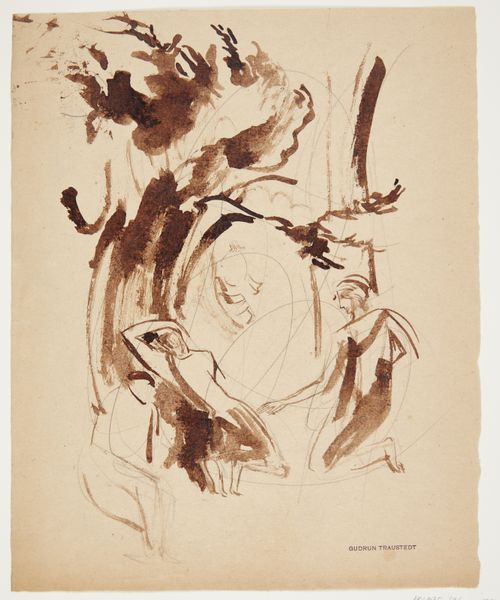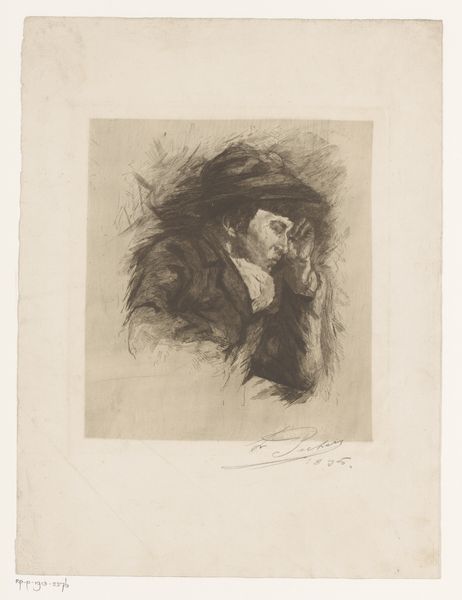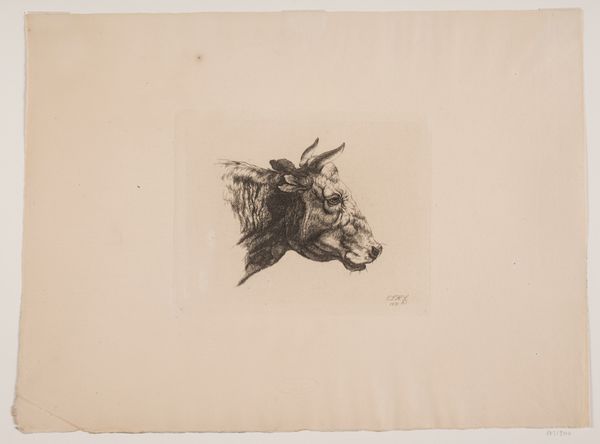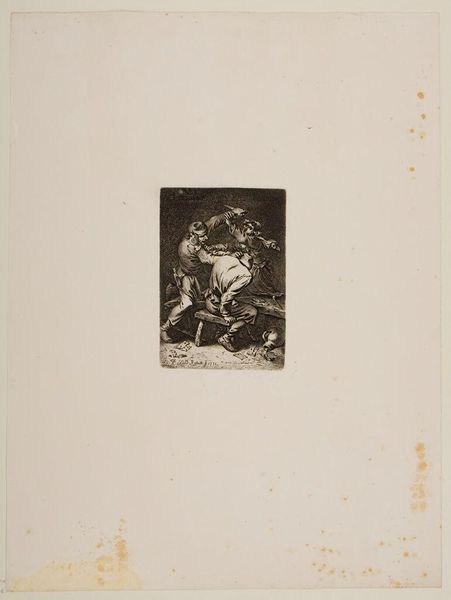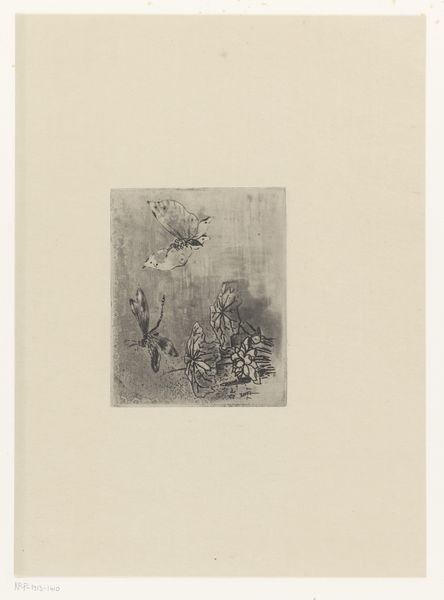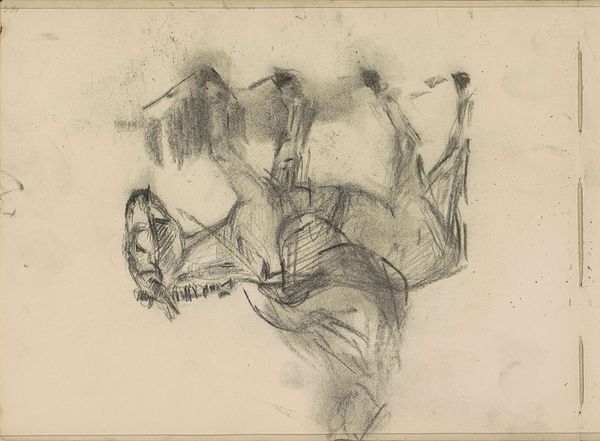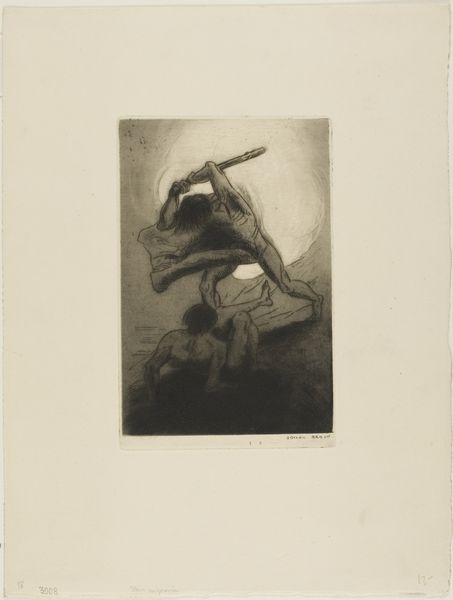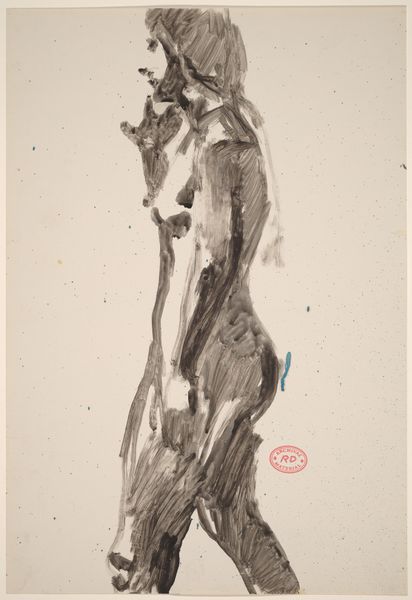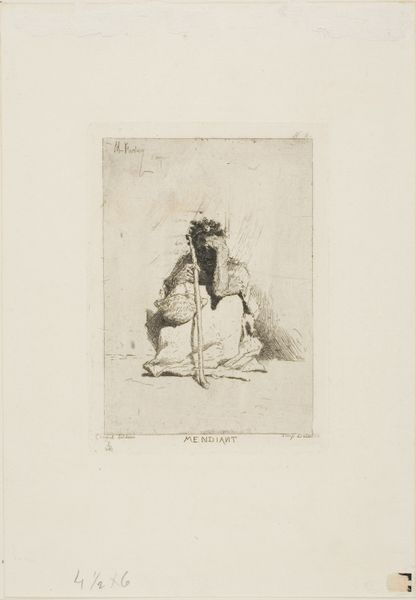
drawing, print, paper, ink, engraving
#
drawing
# print
#
paper
#
ink
#
pencil drawing
#
engraving
Dimensions: 82 × 59 mm (image); 196 × 174 mm (sheet)
Copyright: Public Domain
Curator: Here we have "The Spitfire," a print attributed to Auguste-Louis Lepère, likely created around 1908. Editor: There's an immediacy to it. Stark contrasts—deep blacks and whites—and those gnarled branches clawing into the negative space above really give it an almost violent feel. The composition is really very good. Curator: Lepère was deeply involved in the artistic debates around printmaking in fin-de-siècle Paris. This image perhaps exemplifies his commitment to the idea of printmaking as a distinct and valuable art form in its own right, resisting the pressures for it to be merely a means of reproduction. Editor: I find it striking how much of the visual drama relies solely on the interplay of line and tone. Look at how the density of the cross-hatching defines form and space, turning a rather unremarkable subject into something so evocative. The technical mastery is on full display here, certainly. Curator: Absolutely. Lepère, along with others in the Société de la Gravure Originale, really pushed back against the industrialization of image production, striving to retain artistic control over every stage of the printmaking process. "The Spitfire" demonstrates the artist's prowess with engraving techniques. Editor: The limited palette forces a kind of visual economy that heightens the impact. Each stroke is purposeful, creating a tension between realism and abstraction. It's the strategic deployment of light that commands attention. Note the way light traces those delicate twigs...beautiful! Curator: Understanding the political and artistic climate really illuminates Lepère’s artistic choices. In a rapidly changing society, Lepère's deliberate embrace of traditional techniques underscores the enduring power of handcraft and artistry within mass visual culture. Editor: Looking closely reveals the deliberate roughness. See the subtle blurring of edges, adding an air of atmospheric depth? These details enhance the organic quality. For me it emphasizes the transient nature of organic life and our attempts to preserve it on the page. It's a beautiful reflection on that conflict. Curator: A thoughtful meditation, I agree. Seeing Lepère in context helps us appreciate the statement he's making beyond simply rendering a tree. Editor: A successful tension between decay and life then, visually. It keeps me thinking.
Comments
No comments
Be the first to comment and join the conversation on the ultimate creative platform.
